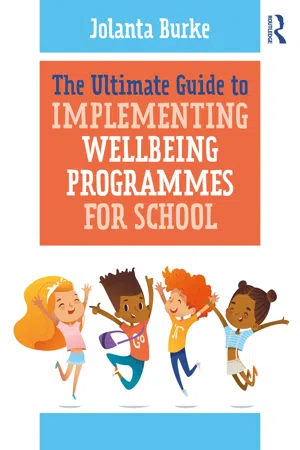I recently attended a talk organised for educators from primary and post-primary schools, during which a speaker asked the audience to guestimate the extent to which our youth experience mental health issues. It was astounding how much the group has underestimated the statistics.
Worldwide, between 10 and 20% of young people experience diagnosed mental health issues (WHO, 2019). The operative word here is “diagnosed” because the number of undiagnosed cases are estimated to be at least double this (Oliver et al., 2008). The worrying fact is that increasingly more children as young as 2 years are diagnosed with mental health problems (Costello et al., 2003). One in eight 5–19 year olds has reported at least one mental health disorder, and their prevalence continues to rise year-on-year (GOV.UK, 2018). Suicide is now the third leading cause of death in 15–19 year olds and the second cause of death in adolescent girls (WHO, 2018a). Girls score lower than boys across most of the wellbeing indicators, and the wellbeing of both genders decreases steadily, as they move towards adulthood (Burke and Minton, 2019). The COVID pandemic further exasperated young people’s wellbeing, aspects of which had reduced compared to pre-crisis levels (Quinn et al., 2020). These staggering statistics continue to shock, as we see a growing number of young people engaging in self-harm, experiencing obesity, abusing alcohol, drugs, smoking and embarking on early sexual initiation.
It is no wonder that international organisations are frantically introducing wellbeing programmes and strategies to try to reduce these numbers. The World Health Organisation (WHO) has created a comprehensive mental health action plan for 2013–2020 (Shrivastava et al., 2015). UNESCO has introduced a strategy on education for health and wellbeing (UNESCO, 2016), UNICEF has promoted its strategy for health (2016–2030) (UNICEF, 2016) and in 2013 the United Nations launched International Happiness Day as a preamble to their 17 Sustainable Development Goals which seek to enhance wellbeing and happiness (UN, 2020). These are just some of the international organisations that put mental health first.
Globally, country governments followed suit introducing their own versions of wellbeing strategies and promoting measures of personal wellbeing at a national level. One of the first ones was the government of Bhutan that made happiness their priority by incorporating it into their constitution and deeming it more important than the pursuit of Gross National Product (Harford, 2019). In 2010, the UK government launched their wellbeing policy (GOV.UK, 2013) along with other European countries, such as France, Germany, the Netherlands, Italy, Spain (Kroll and Delhey, 2013). In 2019, New Zealand announced the creation of the first “wellbeing budget” in the world (Bloomfield, 2019). By 2020, The government of the Republic of Ireland announced that by 2020 all secondary schools would be required to introduce at least 400 timetabled hours of wellbeing for young people aged 12–14 years old (EDUCATION.IE, 2019). While not much guidance has been initially given to schools as to how they are supposed to do it, it resulted in schools becoming creative with the types of programmes and interventions they introduce.
There is a wide spectrum of health-related and/or wellbeing programmes and interventions delivered in schools. Programmes refer to structured series of events designed to increase aspects of wellbeing, for example, Zippy Friends enhancing coping skills (Bale and Mishara, 2004). Interventions are intentional activities designed to boost an element of wellbeing, which can be introduced as part of a class, programme or schoolwide, for example, Loving Kindness Meditation (Fredrickson et al., 2008), or performing Not-so-random Acts of Kindness (Binfet, 2015). In addition to wellbeing programmes and interventions, in this book I urge you to consider creating a comprehensive strategy for wellbeing. A strategy that would incorporate planned, long-term (2–3 years), medium-term (1 year) and short-term (the next few weeks and months) activities, all of which would be aligned with the school needs and a specific wellbeing framework. This systematic approach to wellbeing delivery will set your school up for success (Murphy and Baines, 2015) and prevent you from introducing ad hoc bursts of initiatives that tick off the box for implanting some wellbeing in schools, but may have very little effect on students’ wellness.
Issues with wellbeing
Even though wellbeing is like a velcro, sticking to all school-related activities and has become an integral part of our lives, we tend to have an equivocal relationship with it. On the one hand, we all un...
